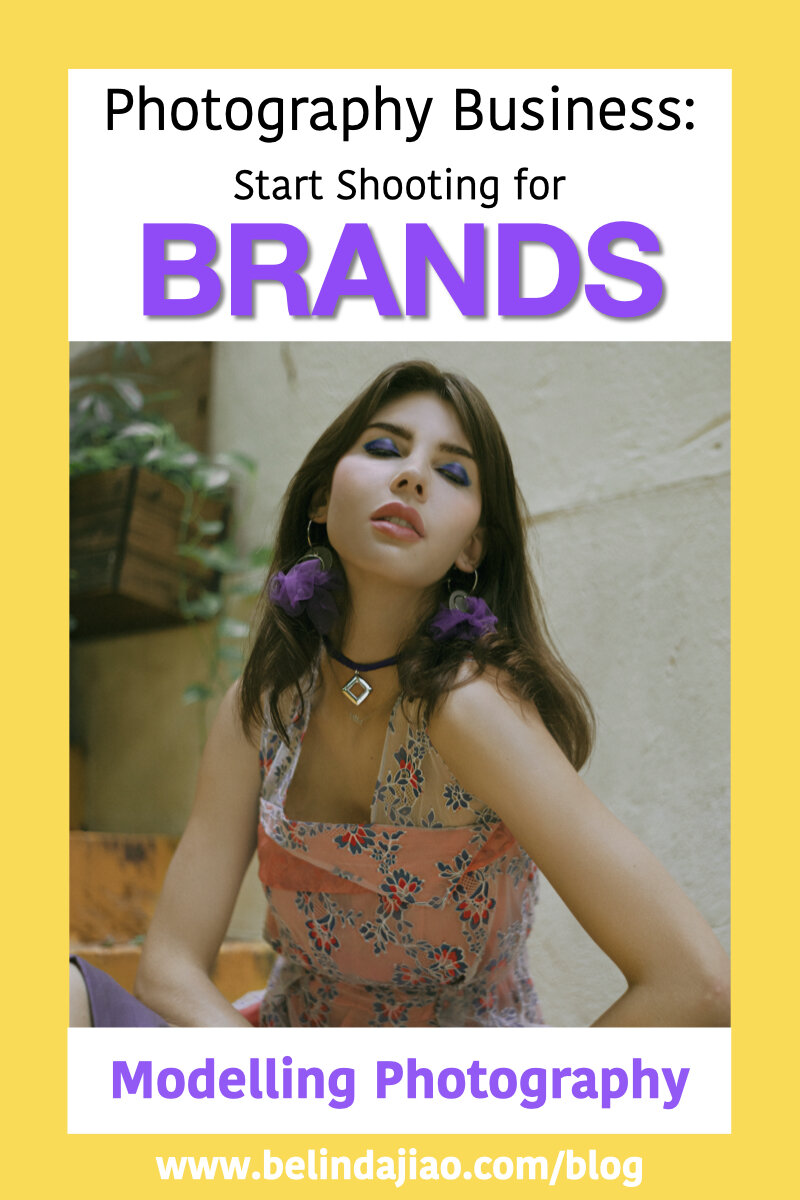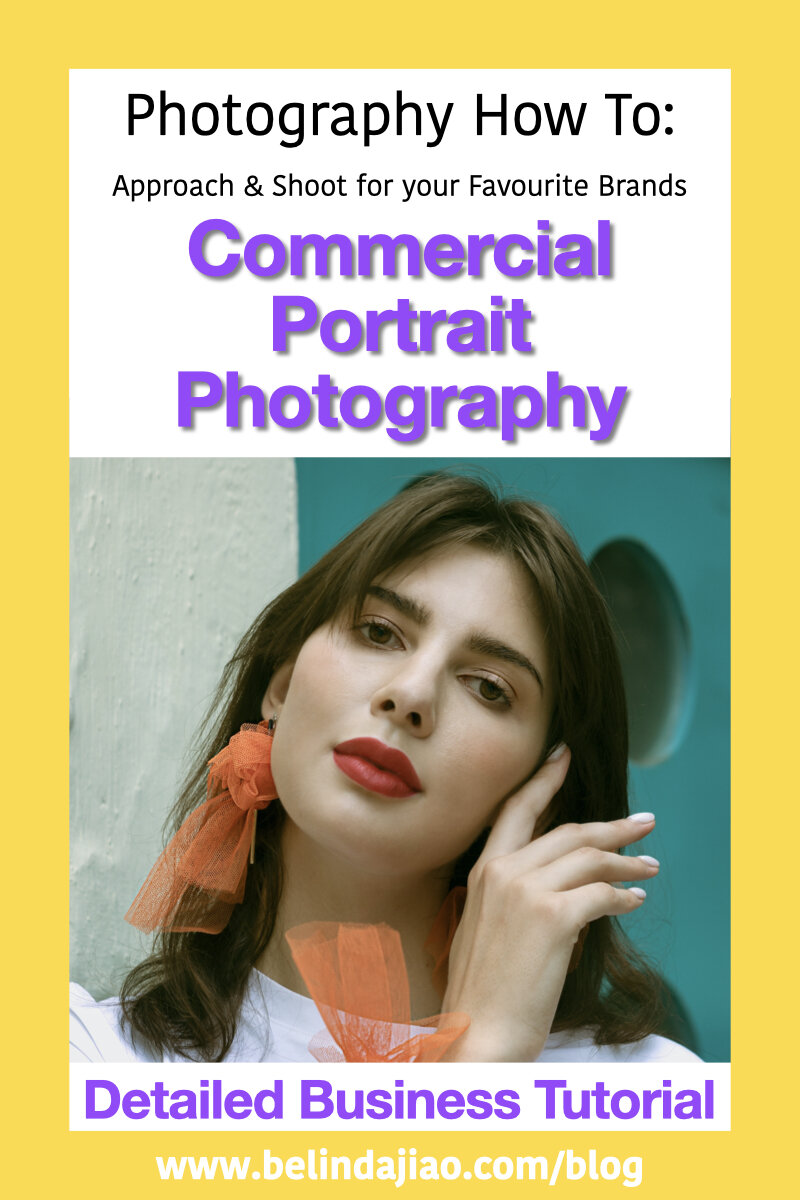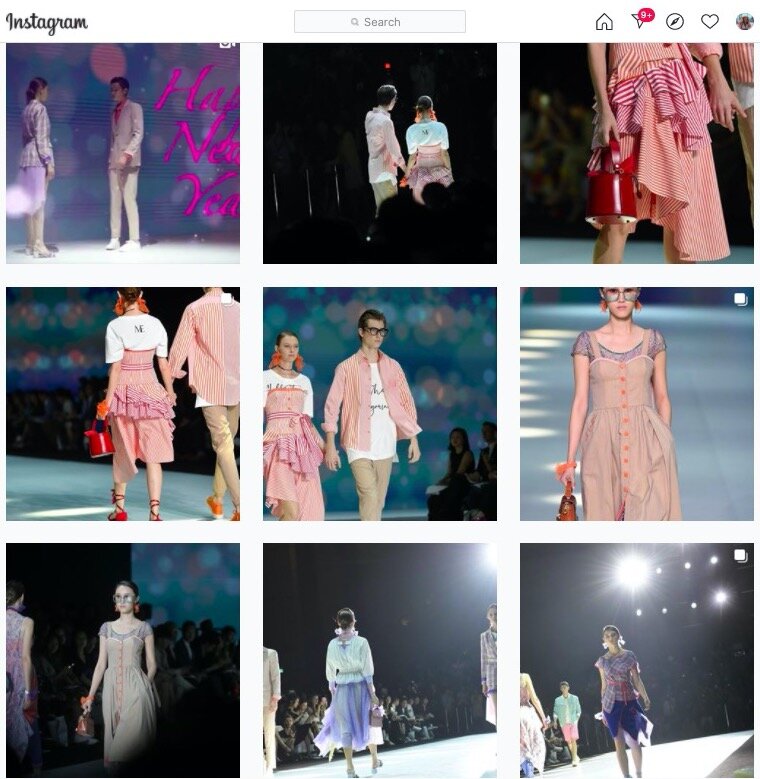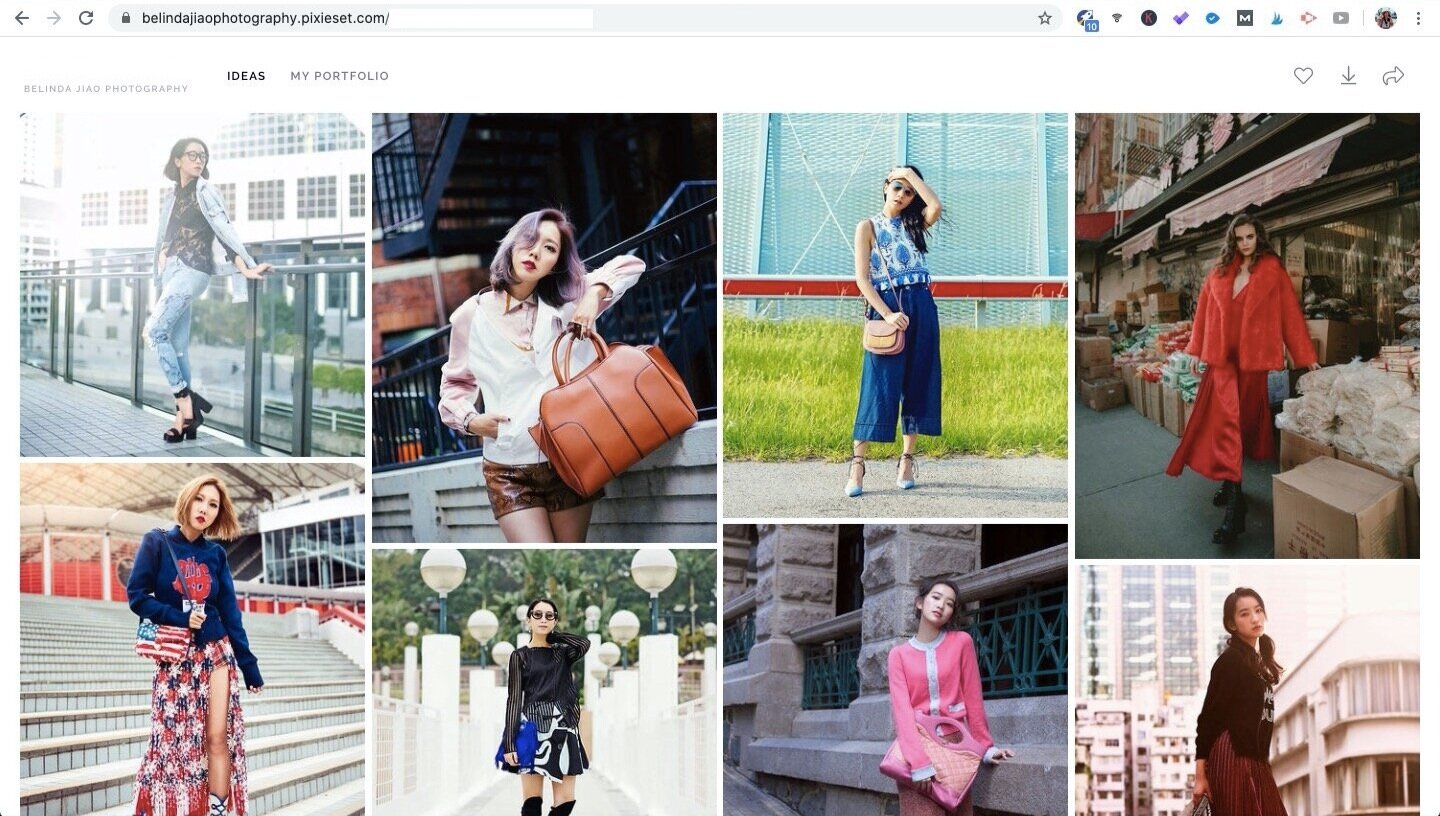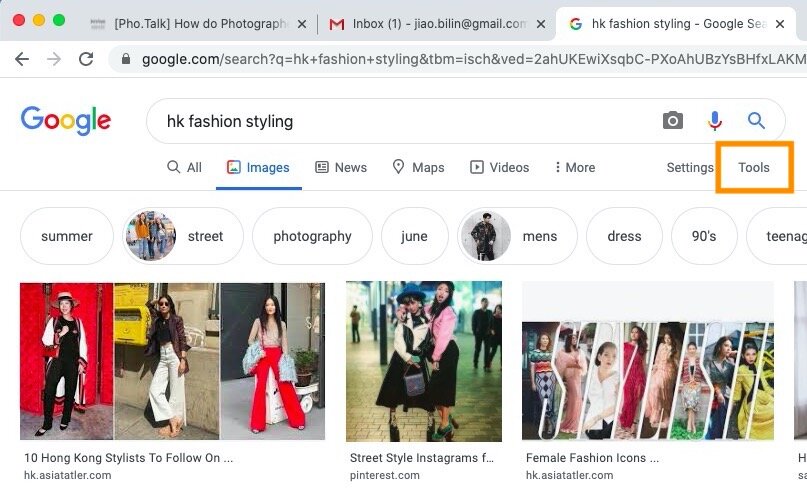If you are researching about how to collaborate with brands, you are probably considering going pro with your photography.
Congratulations! You have worked out a vital next step, which is reaching out to brands as a photographer.
In this guide, you will learn essentially every single thing I learnt from the school of hard knocks in setting up collaboration shoots with brands.
This is going to be a long guide. But give me your full attention. Because it will be worth it. I guarantee that no other person in this industry will unpack everything in such honesty and granularity.
Putting together your first branded collab shoot can seem like a lot of work, but don’t let that put you down just yet! Here is a glimpse of what your very first few collab shoots can do for you - I won the 3rd place for People/ Fashion in ND Awards 2020 for non-professional photographers!
I hope this video would motivate you to get over this initial inertia, and immediately work on your first ever collab shoot.
To make things as concrete as possible for you, I will demonstrate each of the following steps with a recent collaboration I did with Hong Kong based fashion designer, Meiking Ng.
Briefly, here is a step-by-step breakdown of how to start your collabs:
Prospect potential collaborators (Google, Instagram Explore, Industry-specific Organisations etc.)
Send tailored cold messages on Instagram
Streamline ideal collaborator avatar
Build an Inspiration Library
Decide on your scope of work
Build a crew (Instagram DM, Modelling Agencies)
Location Scout
Pre-shoot communication with crew
Because I am covering everything in such level of detail, this article has to be broken down into two parts.
Part I - preparation work up till the point a brand agrees to collaborate (Steps 1-4)
Part II - preparation work for the collaboration shoot after the brand agrees (Steps 5-10)
Here is a video that walks you through practically how to make your collabs happen!
If you find this helpful, SUBSCRIBE to my channel via the box on the left to make the most out of my blog! Also, do share it with people who might be interested. Shoot me an email/ DM to share your thoughts too!
Also, Pin this article to your Photography Business/ Inspiration boards in Pinterest if you find it helpful!
Go to Every Party in Town!
What does this mean?
For photographers seeking to build connections with businesses and brands, it is a wise move to start locally.
Ultimately, there is a person behind a business, and people like to work with your personality not your gear or your photos.
If you speak the same language and share the same culture, there is a better chance that you click with the marketing person behind that business who makes the hiring decisions.
But even after restricting your focus to your locality, there are still a wide variety of corporations.
Throughout my experience as a freelance photographer in Hong Kong, the brands I see around can include tiny online boutiques with no physical presence, bold and fashion-focused designer brands, high fashion luxury brands, middle-sized commercialised retailers, local branches of a large multi-national brand, etc.
There is a different party for each of these categories. Go put yourself in each of these parties, and see which one(s) welcome you.
Find out where these brands and their decision makers are hanging out, then test out the waters by casting your net as wide as possible.
Why is this important?
When you just start reaching out to brands, it is hard to know what to expect.
Because some brands are so small that they have no capacity to take on collaborations, while some others are so large that your pitch will never ever get noticed.
Your task now is to find this sweet spot, where a brand is fairly young in their establishment (equivalent to where you are as a photographer), and is seeing some success that they have the financial ability to start scaling.
This is when marketing makes business sense for them, and yet they haven’t already built connections with an experienced photographer who normally takes all the best jobs.
Cast your net wide for the simple reason that you need to learn more about your local market landscape before finding a way to navigate through it.
How to join your prospects’ parties?
I can’t speak for you as it is an entirely different situation for everyone.
But I can tell you, in my case, where those parties are at and how to join them.
This is rather straightforward - most brands today have a brand presence on social media. And if the brand relies heavily of visuals to market themselves, which is highly likely in this case, they will be on Instagram.
To join the party, simply be on Instagram, and follow the brand.
Don’t worry about sending them stuff at this stage; you probably need to know the industry better before you can make meaningful connections.
Also, separating the research from the outreach keeps your workflow organised.
Find out where these brands hang out first and you have a pool of prospects you can later tap into.
Bonus #1: Follow the Marketing Director/ Project Director/ Art Director/ Founder/ CMO etc on Instagram
Most people stop at the stage where they follow the official brand Instagram. This is something you should absolutely do to the very least, but just doing the basics is not enough.
When you go to a party, you don’t just want to meet people. You want to meet the MOST IMPORTANT people in that party and make an impression.
While some parties may be so small that the organiser is the only participant, some parties are so large that you will have a hard time fishing for that important person.
You can get away with not researching who the decision maker is in the former case. But in most cases, the person managing the brand page DMs is just an office staff that doesn’t deal with higher-level, strategic hiring matters.
If the brand page isn’t following an insane amount of people, go through the list of accounts they are following and check them out one by one.
Usually, you will find the accounts of people taking up important roles in the company. Many of them are social media savvy; they state their titles in their bio.
Another way through which I found and followed these decision makers was through Instagram’s recommendations, and this happened because I was following enough of these brands. This got Instagram’s algorithm to suggest users closely related to these accounts.
If all things fail, I message the official brand page to ask them for the email of the marketing person.
It is going to be hard and require a massive amount of time and dedication to look for the people who can turn your career around, because they are very busy and have no obligation to open up to first-timers.
From my experience, it is not always possible to locate the exact person. If you exhausted every way of researching and still can’t find them, move on and try another brand.
Google/ LinkedIn
This works for more established corporations which has a steeper hierarchy because LinkedIn is not really the platform for small brands.
To join this party, type into Google search phrases such as ‘Tommy Hilfiger Marketing Director Hong Kong’. This will generate results of some names in the search results.
Sometimes, the search results direct you to LinkedIn profiles.
Depending on what you have on your profile, you can go ahead to connect with them.
However, if you are not a full time photographer and you have unrelated experiences on your profile, don’t worry about connecting because your experience in those fields might invite more questions than answers.
Other times, the Google search results will show you previous magazine and publication features of the brand, in which that executive was interviewed on behalf of the brand.
Plug that name back into the Instagram search and see if you find the profile.
Either go back to the list of people the brand is following/ follow the brand and search, or search directly in Instagram’s general search.
Follow these people to get a feel of what they do.
Industry-specific Organisations
Again, this is specific to the type of brands that you want to work with. In my case, I want to shoot fashion, so I would seek to set up collaboration shoots with fashion designers and retailers based in Hong Kong.
I found out that some publications regularly feature promising designers who walked the latest fashion shows and to provide publicity for the fashion communities in general.
For instance, I found out pages like Fashion Farm Foundation Hong Kong, Fashionally, and Hong Kong Fashion Incubation Program.
In my case, Meiking Ng got tagged by these media outlets on Instagram after a fashion week. That was exactly how I found out about the designer brand.
Go find out these parties in your specific situation.
And to join in, simply surround yourself with their content. For instance, follow their pages on Instagram and Facebook; subscribe to their newsletters.
Bonus #2: Create an Instagram album for potential collaborators
At this point, you will observe a massive increase in the number of accounts you are following.
It is important to curate your feed and take control over what you allow into your feed.
My Instagram feed is my source of inspiration so I want to be intentional in what I expose my creative mind to.
The reality is that it is futile to try to catch all the content there is with a limited feed. Plus, Instagram’s algorithm doesn’t show you every single post made by your following anyway.
Another issue arises as your following increase - you will have trouble retrieving one particular account unless you remember the exact name because it will get buried by the newer followings.
When you look for potential collaborators, obviously only a small percentage of the pages you follow end up actually doing a collaboration shoot with you.
Therefore, a handy tip for you is to create an Instagram album and save images from interesting brands. You can review them later and they will all be in once place.
Keeping a tidy workflow is exceptionally important to being efficient in your outreach.
Send Cold but Tailored Messages or Emails
Why is this important?
As I started reaching out as a photographer, I knew no one. When I said no one, I literally meant no one.
I had no connections in the creative industry because I studied law and worked in a bank. It was the opposite, if anything, of the creative world.
And I didn’t have a large Instagram account. I had around 3300 followers. No brand will ever notice my work because my page wasn’t getting that level of traction to get on their radar.
I assume this is the same of you, therefore you are reading this.
Plus, a part of you secretly doubts if your work is good enough to get brands interested in shooting with you.
Therefore, you want to get some sort of response so that you can gauge whether or not your work is up to industry standards.
Send cold messages because you don’t have a better way to get eyeballs onto your work (now). It can feel like you are shouting to a ghost town for a very long while. But the catch is, you only need one person to agree to collaborate to get started.
Tailor them so that they are more likely to respond.
What goes into these messages?
Simplicity is king here. The brand has a million reasons to not respond. But do not contribute the ‘million+1’ th reason.
Every of the elements below should consist of one line.
Self-intro - in my case, I describe myself as a Hong Kong based fashion photographer (or lifestyle photographer depending on the prospect)
Praise the brand about one thing
Ask how they are doing
Stop there. Instagram (or social media in general) is an online version of a cocktail party. Do you spit out your business and proposals the moment you start talking? Hell no.
So why should the Instagram DM be any different?
While messaging pulls us closer to each other, we often forget certain aspects of social etiquette that makes us behave in socially-awkward ways.
So don’t worry about them not responding. Because in real life, if you told someone your name and what you do, made a positive note about them and asked how they are doing, they totally will respond.
If at this stage they don’t, you consider them jerks. And you won’t want to work with jerks anyway. So why would it work differently on Instagram?
Following the normal course of events, they will respond. And most likely at some point, they will ask about you.
Here is how you take the conversation forward.
Say that you have an idea for them
You regularly collaborate with brands and ask if they are interested
At this point, usually one of the two things happen. Either they put you on seen and disappear, or they ask about the details of how the collaboration works.
If they want more details, ask if you can send them an email, and who to address.
Here is what goes into the email. Again, every item should be in one sentence.
Introduce yourself again and say hello to that person
Explain that you are reaching out following the brief discussion you had on Instagram
Point out how this collaboration will benefit them
Outline their part in the collaboration aka what exactly they have to do
Attach a moodboard of your general direction of the shoot
Ask them what they think
Your custom signature (mine contains links to my portfolio and instagram, as well as phone number)
Send it and stop worrying. You did your best, and the ball is now in their court.
How to tailor your message?
Every blog out there tells you to tailor your messages. But no one tells you how exactly to tailor. So here are some ideas for you.
Self-intro
Choose one photography niche that applies best to the brand when referring to yourself.
Less is more. Don’t dilute or cannibalise your own brand by including another genre of photography
Fashion brand —> fashion photographer; Restaurant/ Cafe —> food/ lifestyle photographer; Business —> events photographer etc.
Praise the brand
Just say what you would say to a friend in a conversational manner
Don’t say something super complicated nor attempt to impress them with your industry-specific knowledge
One easy way to go about it is to start with your opinion because it can’t go wrong. And it adds a personal touch to your message, eg
“I love how you incorporated floral patterns into your latest collection!”
“I love the pastel colours in your feed!”
Whereas if you say something seemingly intelligent like “your wardrobe is a bold attempt to explore feminism”, it can totally backfire because what if feminism wasn’t even the designer’s intent?
As an example, here is what Meiking Ng’s Instagram page looks like.
I saw the dreamy vibe in the designs and so I just said, ‘I like the dreaminess in your wardrobe!’.
And that was enough.
Ask how they are doing
Totally no need to overthink, not much tailoring is needed in fact
But when special circumstances crop up, feel free to ask them about it
Recent happenings might include the virus situation, fashion shows (since I am interested in fashion), newspaper features etc.
How this collaboration will benefit them
This is rather critical because of course the brand doesn’t care about you; it is all about what they can get out of the collaboration
The most apparent benefit is that they are getting professional photos for free. This is the most relevant where they recently launched a new product line and haven’t got the photos taken
Publicity can also be one, depending on the relative size of your audience. Even if you don’t have a large following, you might still be able to make a case where the aggregate following of you, the model, the model’s agency, the makeup artist (and a magazine if you are submitting your work) is greater than the brand’s following.
Fight the temptation to make an article out of this. One strong and concise reason would suffice.
The moodboard
Create a Moodboard (or a client collection) in Pixiset. See the above screenshot for an example of what that can look like
Sometimes, if it happens that there is an Instagram curated page that fits the theme, I simply share that page. But the art direction of that page has to really be on point.
Since you are sending a moodboard only with their permission, it is tricky because moodboards take time to prepare so it doesn’t make sense to do a moodboard for every single brand you reached out to just to find out that they have ghosted you and that moodboard will forever be forgotten in history.
But if you start preparing after they gave you permission to email, it can appear amateurish if it takes you more than an hour to send an email.
This brings us on to the next point
Visualise your Ideal Collaborator
What is an ideal collaborator?
First and foremost, that collaborator is interested in your work enough to respond.
Secondly, you are happy with the value they ascribe onto you. This requires some explanation.
Money is one way of expressing value. But since no monetary transactions are involved in collaboration shoots, you can’t directly see if you are on the same page regarding the value of your services.
Some brands see your photos as mere digital files. This is not a brand you want to work with because they are going to treat your services like a commodity, which gives you no pricing power.
They are the ones who will say, ‘why are you more expensive than the other guy?’, because the value they see in you is the capacity to produce the required number of digital files. In their eyes, every photographer is the same.
Ideally, you want to find a collaborator that loves your artistic style. They like your ideas and vision, which is something only you can do.
No one can do you better than yourself and this gives you the pricing power, but not just that. More importantly, it gives you the respect and creative freedom you deserve as a talented artist.
Why is this important?
Earlier on, we talked about a dilemma in which you had to come up with a relevant moodboard almost immediately after the brand gives you permission to email them.
If you actually have nothing in hand, it is going to reflect badly on your professionalism because from the time lag between that last message and the email, it is apparent that you actually had nothing prepared.
But where you narrowed down the pool of potential collaborators that you are reaching out to, though, it becomes likely that a moodboard that works for one brand also works for another.
Therefore, with more focus in your brand outreach strategy, you could be more effective in your efforts.
How do find out your ideal collaborator?
At this point, you would have cold messaged a bunch of brands via Instagram DMs or emails.
Depending on the industry you are reaching out too, your response rates might vary. But it is safe to say that since you are a complete beginner in this and you know no one, it can take up to tens or hundreds of messages to get one brand to respond positively.
This is actually great news. Because those who didn’t respond helped you eliminate 99% of the market and what is left is the 1% that actually matters.
If you are lucky, you might have heard back from a few more brands, enough for you to see some patterns. Put these brands side by side, and figure out what is common among them.
Here are a few traits that I found to be common across my outreach response.
Location - the brands that have real estate in more expensive parts of Hong Kong are more likely to respond
Account size - the brands that responded positively had a follower count in the range of 600 - 2000
Language - the brands that typed their captions in English are more likely to respond
Style - the brands that go for a more high-fashion direction are more interested in my aesthetics
Brand aesthetics - the brands that posted lifestyle fashion imagery as opposed to product-only shots were more likely to respond
These are just a few examples. You need to find out what is working in your case.
Build your Inspiration Library
What goes into this library?
Given that you have figured out who your ideal collaborators are, you then also know what they are selling and thus what photos they need.
Simply put, you know the art direction better.
If you have previously done some collaboration shoots already and have images that fit this style, good for you, store them in a file.
But if you don’t, and this is really the point of writing this article, then find these images online.
Based on my experience, brands are perfectly fine with a moodboard containing samples not necessarily shot by you. They just need a moodboard that shows them exactly the direction you are proposing.
Develop a pool of images that covers a few major art directions that your collaborators would realistically want.
Why is this important?
This allows you to still tailor your moodboards to a sufficient degree, and yet do so in a timely manner.
It is going to smoothen your work flow so that your actions are not dependent on the brands getting back to you.
It is also worth doing for the simple reason of maintaining your professionalism.
In conjunction with buildding up your library, you can send cold messages at the same time. With this library in hand, now you don’t have to worry about the moodboards as you email brands.
This should speed up your outreach cycle massively.
How to build this library?
These few ways work generally across many industries. You just have to find the specific content yourself.
Search for Images on Google - type in relevant phrases. For me, I type things like ‘Hong Kong Street Fashion’ or ‘Hong Kong Fashion Styling’
Download the pictures into your library
Label them into a few categories if applicable. For me, my art directing consists of a few styles: street fashion, elegant/ premium fashion, and editorial fashion.
Make sure these images have a consistent theme though, because it is tempting to simply put every pretty image you come across and that will give you an incohesive gallery that doesn’t impress brands.
Bonus #2: Filter for and use only large images from Google Search
Because you don’t necessarily have the type of images you want to show yourself, you are downloading from online sources (mainly Google), which leads to a massive downgrade on the image quality.
If an image is of too low a quality, the collaborator will see a very unflattering image when they view the moodboard in full screen view.
Right below the search bar in Google Image, you see a menu stating listing out available Google products. To the very right, you see two buttons - settings and tools.
Click on Tools. See the orange rectangle in the screenshot below.
Once you click on it, a second menu appears. Click on ‘size’, which is the first item on the menu.
A drop down then appears and click ‘large’. Your search results will then refresh to give you only the files of a certain size.
To further safeguard the quality of the downloads, click to preview the image and only use it if the quality is acceptable in preview.
Part I Summary
In this first part, we covered many things using my collaboration with Meiking Ng as a real example of how it works for photographers.
Prospect potential collaborators
Send tailored cold messages on Instagram
Streamline ideal collaborator avatar
Build an Inspiration Library
Read Part II to learn what to do after the brand agrees to collaborate!
More sharing coming soon!
SUBSCRIBE via the box on the left for more PRO tips, and follow me on Instagram (@_bjiao__) and let me know what you think in the comments!
Share this article on Pinterest too!
Keep shooting, keep creating!
The mission of this blog is to provide the best insider information in the photography industry, as openly as possible. You have direct access to my
first-person experience as an aspiring photographer who talks, but also works.
Honest opinion are rarely available as public resources because this is a competitive industry. Huge sums are made when such information is delivered in the form of mentorship and workshops.
This blog is a great way in which I cover my daily expenses, but also provide real value.
If you have learnt something that would be worth at least $10, please consider donating to the page. This enables me to keep creating content and helping more people sustainably.
Your continued support for the blog is appreciated!

